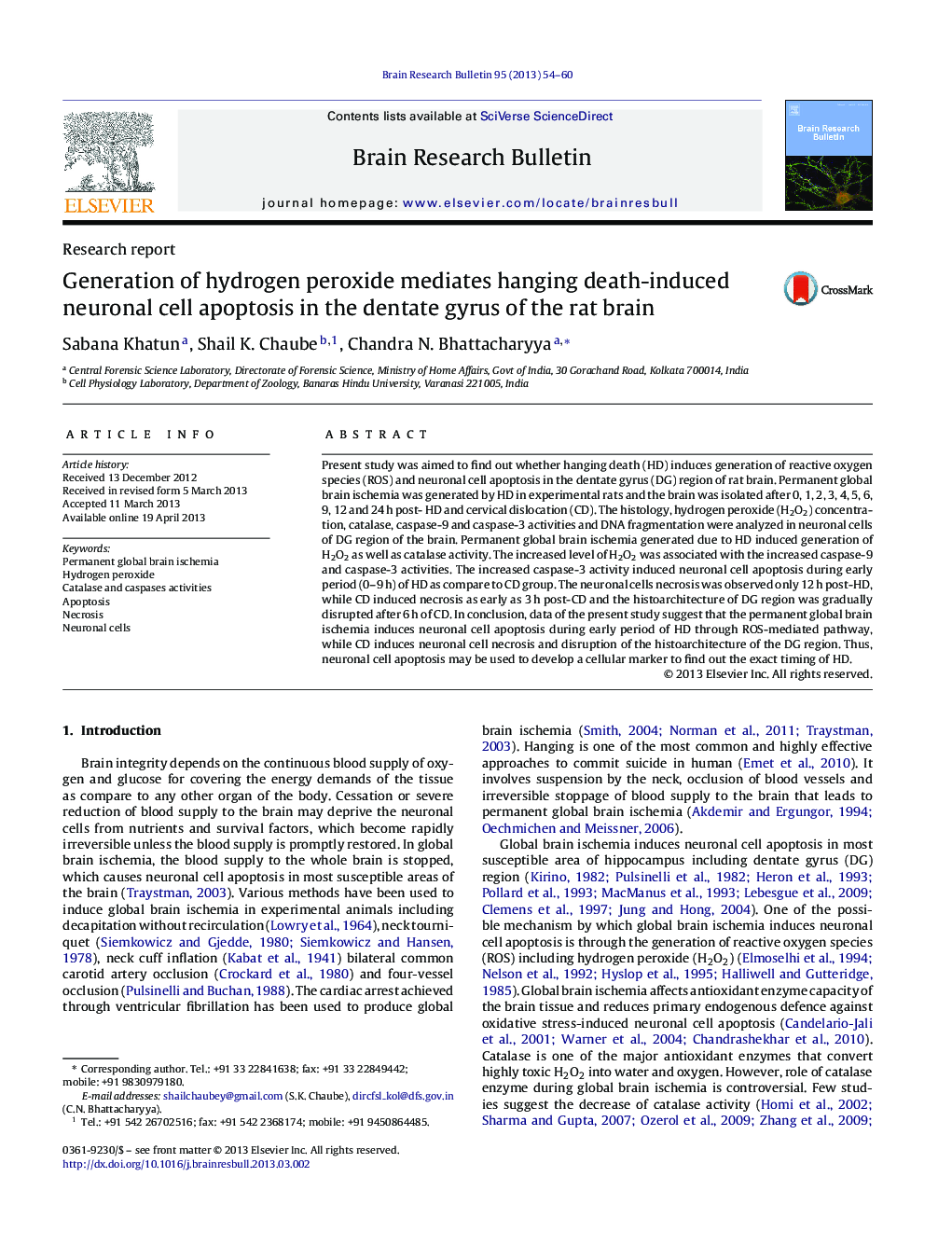| Article ID | Journal | Published Year | Pages | File Type |
|---|---|---|---|---|
| 6261902 | Brain Research Bulletin | 2013 | 7 Pages |
â¢Hanging death (HD) increased level of H2O2 during early experimental period.â¢The increased level of H2O2 induced neuronal cell apoptosis through caspases-mediated pathway.â¢HD induced necrosis and disruption of histoarchitecture during later period of HD.â¢Neuronal cell apoptosis may be used to develop a cellular marker for identification of exact timing of HD.
Present study was aimed to find out whether hanging death (HD) induces generation of reactive oxygen species (ROS) and neuronal cell apoptosis in the dentate gyrus (DG) region of rat brain. Permanent global brain ischemia was generated by HD in experimental rats and the brain was isolated after 0, 1, 2, 3, 4, 5, 6, 9, 12 and 24Â h post- HD and cervical dislocation (CD). The histology, hydrogen peroxide (H2O2) concentration, catalase, caspase-9 and caspase-3 activities and DNA fragmentation were analyzed in neuronal cells of DG region of the brain. Permanent global brain ischemia generated due to HD induced generation of H2O2 as well as catalase activity. The increased level of H2O2 was associated with the increased caspase-9 and caspase-3 activities. The increased caspase-3 activity induced neuronal cell apoptosis during early period (0-9Â h) of HD as compare to CD group. The neuronal cells necrosis was observed only 12Â h post-HD, while CD induced necrosis as early as 3Â h post-CD and the histoarchitecture of DG region was gradually disrupted after 6Â h of CD. In conclusion, data of the present study suggest that the permanent global brain ischemia induces neuronal cell apoptosis during early period of HD through ROS-mediated pathway, while CD induces neuronal cell necrosis and disruption of the histoarchitecture of the DG region. Thus, neuronal cell apoptosis may be used to develop a cellular marker to find out the exact timing of HD.
